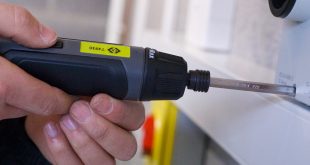CE Marking of hardware for fire doors is now compulsory and the Guild of Architectural Ironmongers (GAI) is keen to clarify what it means for the market.

From the beginning of July any product manufactured, which falls within the scope of a harmonized EN standard, must be CE marked.
The vast majority of fire and escape doors in the UK are still supplied as door assembles. Specifiers have traditionally preferred the use the services of an AI to schedule individual doors because it optimises choice in design and performance, as well as often being more cost-effective than the ‘one size fits all’ approach of doorsets.
This is especially important for fire and escape route doors given their vital role in protecting and saving life in the event of fire. This will not change and you can to continue to specify individual doors to their exact requirements and specification.
“By far the majority of hardware sold in the UK today is for use on bespoke designed door assemblies, and the market will still be able to use an AI to schedule hardware for use on door assemblies,” says GAI Chief Executive Gary Amer, “This gives buyers the design freedom they require, backed with the specialist detailed knowledge which an AI brings to the party about the specifics of door hardware for fire doors.”
Perhaps it’s worth taking a moment o explain the difference between a doorset and a door assembly because there’s no visible or practical difference between the two once they are in situ. The difference lies in how they are supplied to site and by whom. A Fire Door Assembly is typically the way in which doors are specified. A CE Marked Fire Doorset is supplied by one legal entity, or company.
Typically, a fire door assembly is supplied from more than one source, with each company taking responsibility for its own part of the final door assembly.
Characteristically, the door frame, door leaves and glazing beads are supplied by a joinery firm, the hardware from an architectural ironmongers and the glass from a glazing supplier. This balance may change but essentially there are separate contracts and invoices for each component and so the contractor must contact the relevant company if there are any problems or snags.
The essential difference with a Fire Doorset is that it is supplied by one company which takes responsibility for the whole doorset. It is worth noting, however, that a doorset might not be delivered to site fully assembled and it is quite possible that it will be delivered in parts, even on separate days.
It is a common misconception that a doorset must be supplied fully finished and ready to hang. This is not the case. It is the fact that it comes from one source that makes it a doorset, not its state of assembly when it arrives on site. In both cases, the fire door comprises the frame, door leaves, glazing and beads and all the associated essential hardware. This essential hardware is the hardware that must be present for the door to perform it fire protection function: hinges, closers, operating furniture and intumescent/smoke seals.
It remains unclear what impact these new regulations will have on the way that fire and escape doors are bought and sold in the UK, a market, serviced by architectural ironmongers and traditionally supplying doors as door assemblies.
“The GAI supports the components route to market and firmly believes that it will remain prevalent even with CE marking of fire doorsets,” says Amer. “Despite this, the GAI also recognises that many CE marked doorsets are specified: this market is growing but it is not the only way to go, and shouldn’t be viewed as such.”
 Builders Merchants Journal – BMJ Publishing to Builders Merchants and the UK merchanting industry for more than 95 years
Builders Merchants Journal – BMJ Publishing to Builders Merchants and the UK merchanting industry for more than 95 years



